Patient-Centered Care
- What Is It?
- Services offered to patients with respect and high-level responsiveness.
- Who Offers?
- All medical staff members, including nurses, doctors, surgeons, administrators, etc.
- Main Principles:
- Quality, safety, support, understanding, respect.
Today, patients want to make sure that their care is at a high level or, in other words, patient-oriented. What it actually means to expect patient-centered care in today’s facilities? Healthcare services have to be offered to patients with respect, high-level responsiveness, and professionalism by all the medical staff, including nurses, doctors, surgeons, administrators, and researchers. There are several important principles in providing care: quality, safety, support, understanding, and courtesy (Mohammed et al., 2014). The government defines the right to ask for such kind of care as an important issue of democratic society.
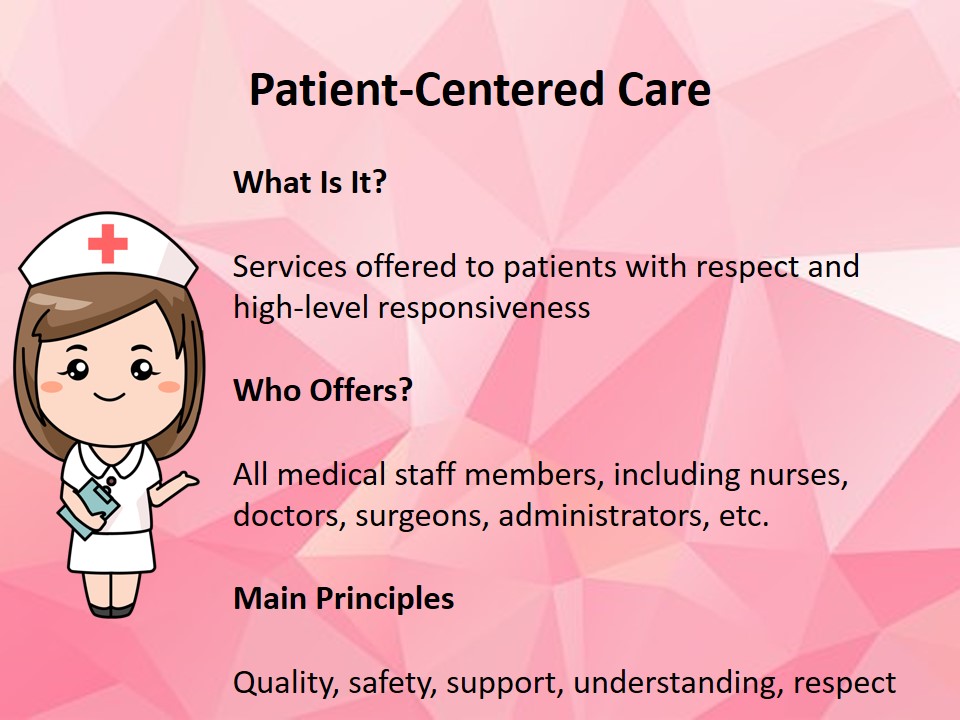
Quality Factors
- Technology
- Communication
- Collaboration
- Shared Decision-Making
- Laws, Regulations, and Policies
There are many factors that may determine the quality of care that is offered to patients in modern healthcare facilities. The most frequently discussed issues are as follows (Morley & Cashell, 2017):
- Technology (the right balance between information technologies and patient’s needs cannot be neglected);
- Communication (a vital element of all healthcare process as it defines the exchange of information, human emotions, attitudes, knowledge, etc.);
- Collaboration (a key strategy in healthcare reforms to promote positive patient outcomes and reduce medical errors);
- Shared Decision-Making (an approach to involve patients and reflect on the level of collaboration between all members of a healthcare process);
- Laws, Regulations, and Policies (common standards for the medical staff and patients to be followed under any conditions).
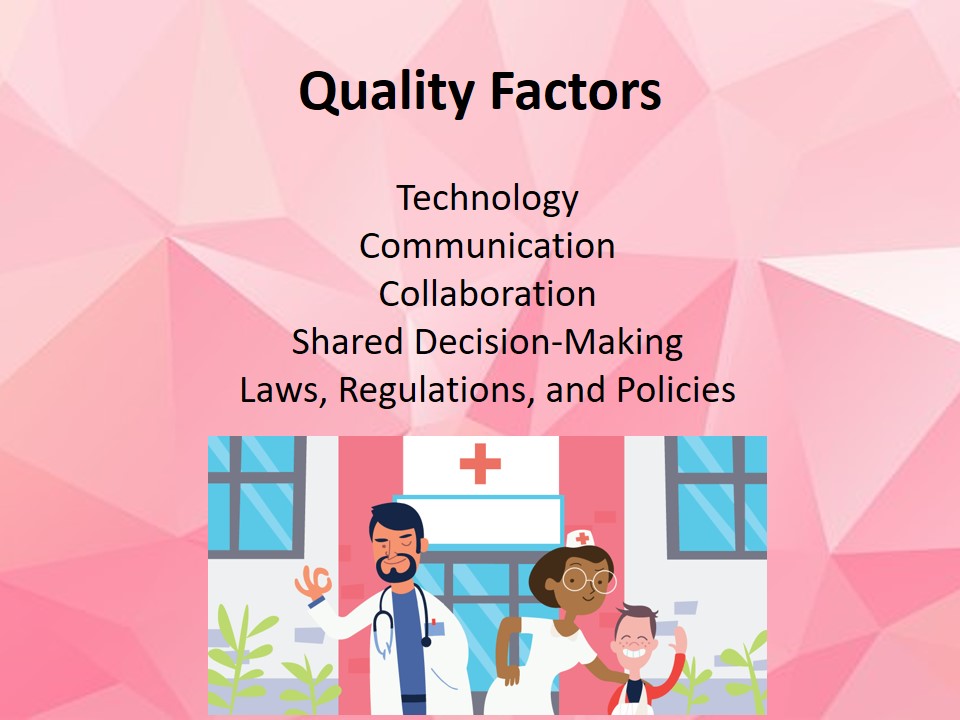
Technology
- Involvement in technology use.
- Fast exchange of information.
- New positive attitudes toward technologies.
- Privacy concerns.
- Improved knowledge and new skills.
Regarding the existing technological progress and the spread of various digital devices, technology plays an important role in the provision of healthcare care services. It is necessary to admit that medical staff members cannot just stop using technologies because the level of their involvement at this moment is already extremely high. Technologies bring a number of positives aspects in care, including the development of new health information technologies like electronic medical records (EMR) and patient health records (PHR) that improve data workflow and fast exchange of information. Patients are satisfied with the possibility to save their time and receive treatment without telling their whole stories several times (Morley & Cashell, 2017). Still, such shortages as the threat of private information disclosure and the necessity to improve knowledge and gain new skills cannot be neglected.
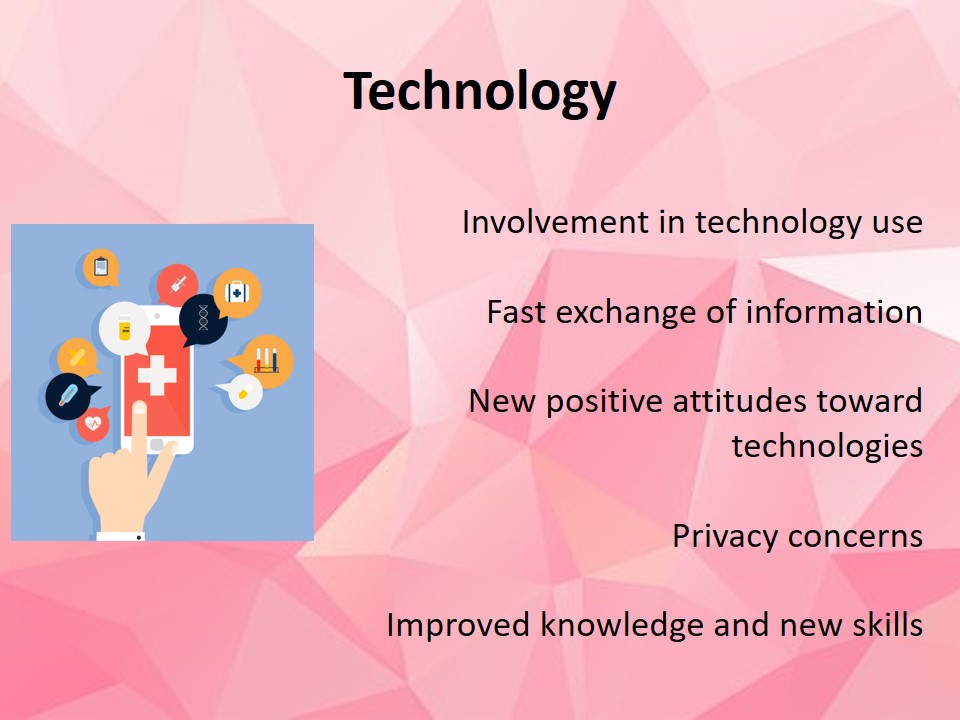
Communication
- Remove anxiety and fears.
- Provide clear information.
- Feel control over a situation.
- Value all patients and their families.
- Satisfy team’s and patient’s needs.
- Reduce medical errors.
Communication is one of the essential factors of quality and safety in patient-centered care. Its benefits attract the attention of many modern facilities, and medical workers are encouraged to develop their communication skills within the team, as well as with patients and other stakeholders. When patients address hospitals for the first time, they usually feel anxious because something goes wrong with their help (Mohammed et al., 2014). Communication removes all these fears and promotes the exchange of clear information. As a result, patients can obtain control over a situation and understand that they are valued by the medical team. Satisfaction of team members’ and patients’ and the reduction of medical errors are also pleasant outcomes of communication.
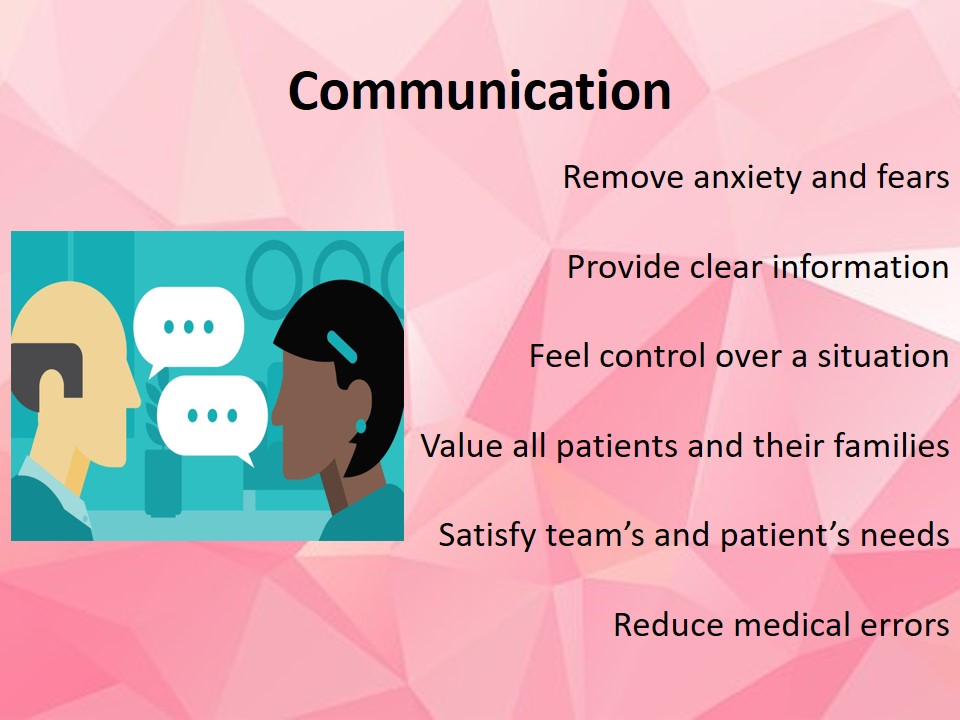
Collaboration
- For medical staff:
- Role clarity;
- Task orientation;
- Trust and responsibility;
- Time;
- Skill development;
- Experience exchange.
- For patients:
- Willingness to cooperation;
- Ability to pose questions;
- Self-care improvement;
- Emotionally stable environment.
If a hospital aims at providing high-quality services for patients, collaboration has to one of the main factors for consideration. Collaboration improves the work of a multifunctional team, as well as supports patients and their families (Morley & Cashell, 2017). Medical staff can win with collaboration because of the possibility for its members to clarify their roles and understand their tasks. In addition, they develop trustful relationships, understand their responsibilities, plan their work in a timely manner, develop skills in different fields, and exchange their experience. Patients demonstrate their desire to cooperate and pose questions. Nurses help them improve self-care and control their emotions to be treated in a stable environment.
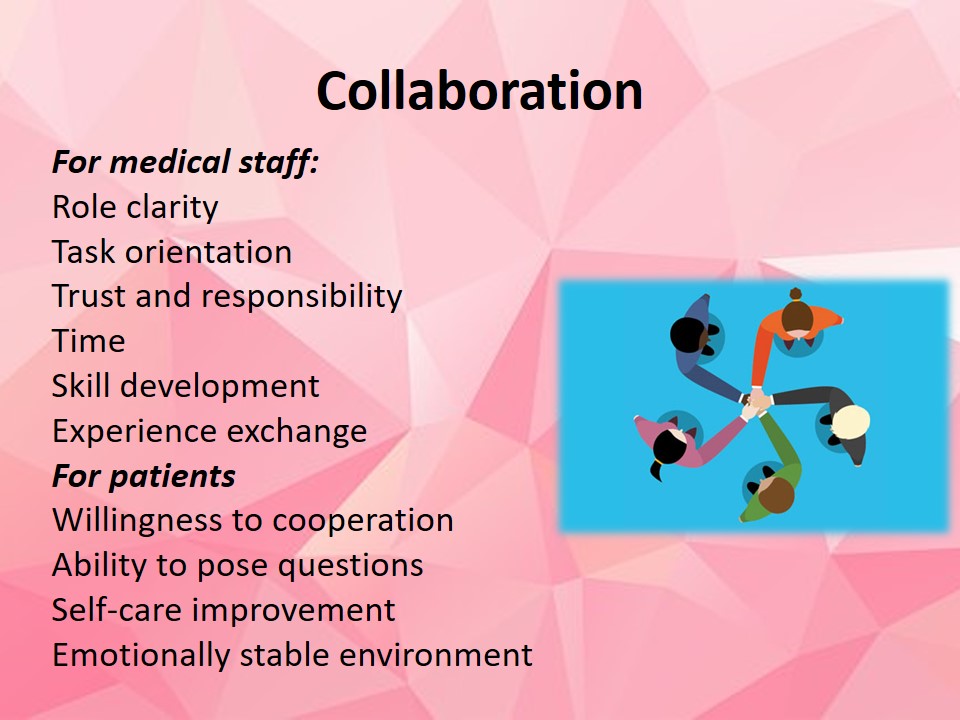
Shared Decision-Making
- Patients share their personal information.
- Clinicians inform patients about their health conditions.
- Available options are openly discussed with families.
- A final decision is made.
The main principle of shared decision-making is to involve both, clinicians and patients, in gathering information, understanding a care plan, and making a mutual performance to achieve positive results. First, patients have to provide their doctors with personal information. Then, doctors and nurses must inform patients and their families about the current diagnosis (Mohammed et al., 2014). The next step is the discussion of available options for a hospital and a patient. Finally, a final decision is discussed with both parties have the same amount of knowledge.
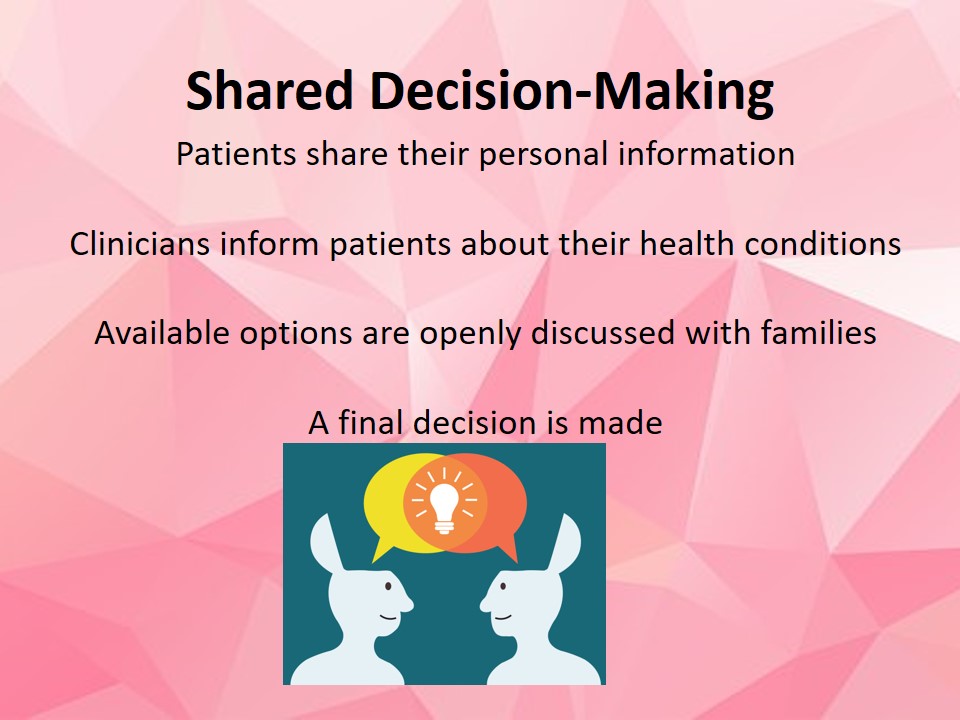
Laws, Regulations, and Policies
- ONC:
- Regulations for all healthcare facilities in the US.
- HIPAA and ACA:
- Laws and policies to protect the rights of patients and medical and healthcare workers.
In the United States, there are many acts, policies, and agencies according to which all healthcare facilities are obliged to work. The Office of the National Coordinator for Health Information Technology’s (ONC) is the main regulatory body in the US healthcare system (“Laws, regulation, and policy,” 2018). It is the author of the regulations across all the states and the programs like the Medicaid and Medicare. In addition, such acts as the Health Insurance Portability and Accountability Act (HIPAA) and the Affordable Care Act (ACA) are used to protect the rights of patients and determine the quality of medical work (“Laws, regulation, and policy,” 2018). These acts can be used to support all people and create equal conditions for work and treatment.
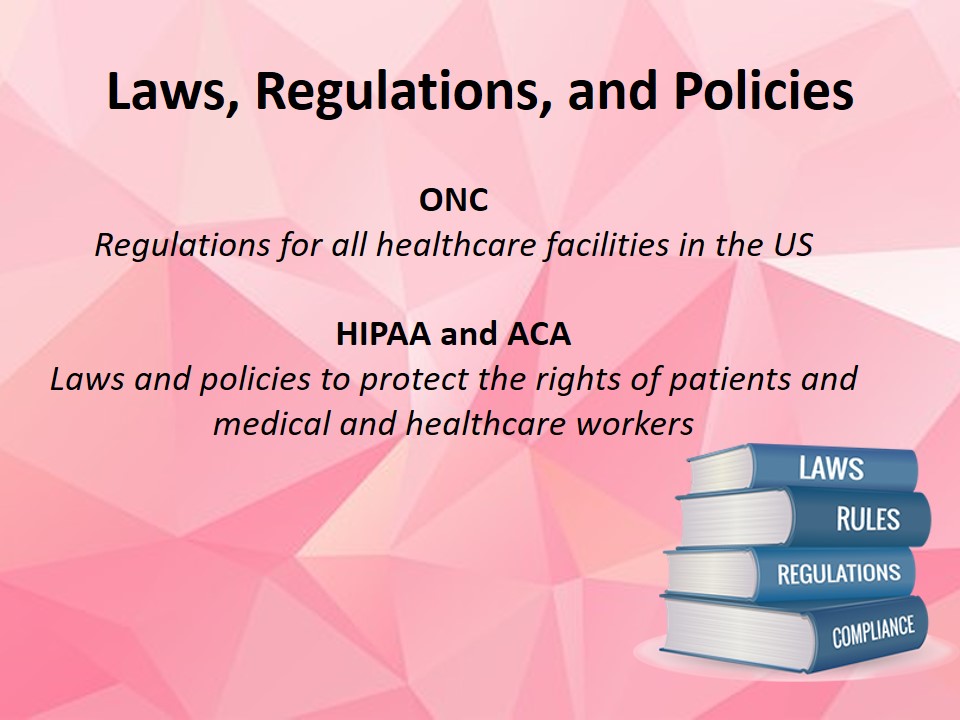
TEAMSTEPPS Strategies
- Principles:
- Team structure.
- Communication.
- Leadership.
- Situation monitoring.
- Mutual support.
- Strategies:
- Task-assistance.
- Cross-monitoring.
- STEP.
- Check-back.
Healthcare workers can use a variety of options to improve the quality of care and underline the role of patients in any treatment. According to the Team STEPPS pocket guideline (n.d.), there are five main principles for hospital performance, including team structure (identification of all the elements of care), communication (exchange of information), leadership (motivation of a team and ensuring team activities), situation monitoring (assessment of a working process), and mutual support (cooperation in a team). These principles help formulate various strategies to improve the quality and safety of patient care. Some of them are task-assistance, cross-monitoring, STEP, and check-back.
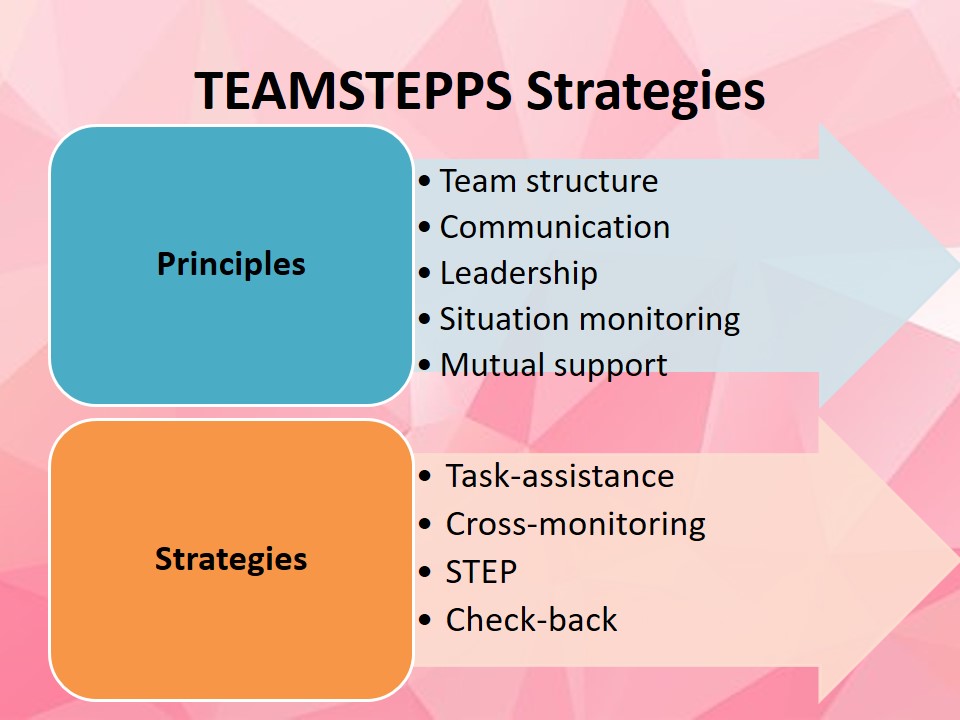
Task-Assistance
- Create a team spirit.
- Learn each others’ skills.
- Protect in overload situations.
- Complete tasks and promote patient safety.
- Develop a favorable climate.
Medical staff members have to support each other and collaborate to make sure that they do everything possible to meet the needs of their patients. On the list of the TEAMSTEPPS guidelines and strategies, the idea of task-assistance seems to be a reasonable contribution to clinical practice (Team STEPPS, n.d.). It teaches employees to help each other with different tasks and build a strong team of professionals, who are able to:
- Protect each other in any overload situation;
- Complete their tasks with the context of patient safety;
- Foster a climate that is favorable for a team, patients, and their families with a minimum of errors and wrong decisions being made.
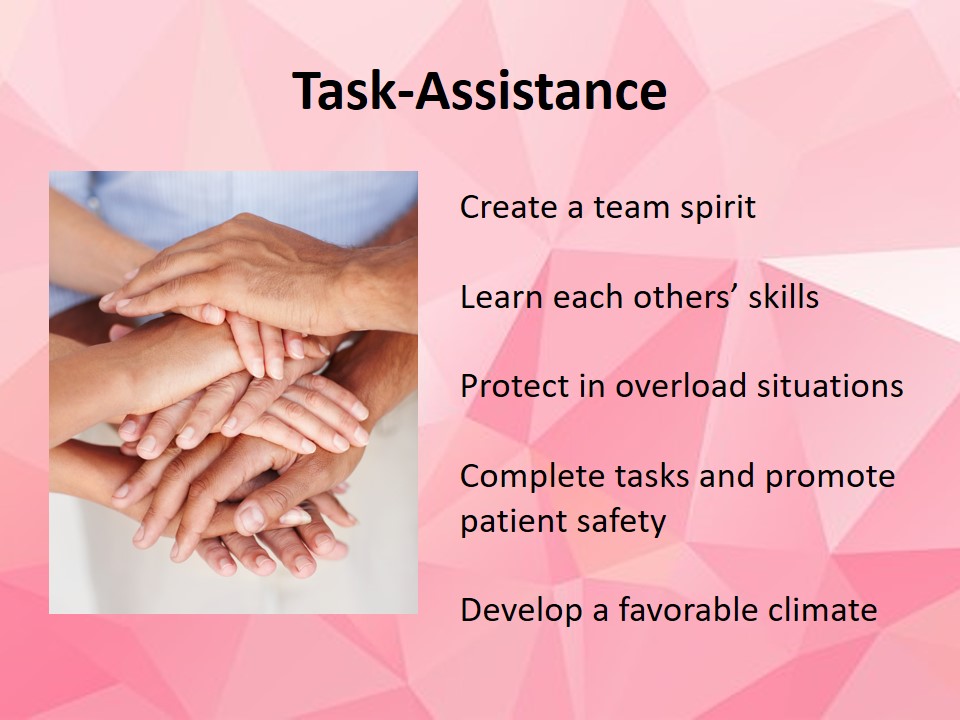
Cross-Monitoring
- Reduction of harm errors.
- Support each other.
- Monitor each others’ actions.
- Create a safety net.
- Catch mistakes.
- Watch the back.
Cross-monitoring focuses on the reduction of harm errors and supporting each other. This strategy is based on the idea that monitoring and watching are used to detect shortages and wrong steps at their early stage not to provoke new problems and challenges. Quality care is possible when the medical staff works properly and avoid harms. Cross-monitoring includes the necessity to observe each others’ actions and share personal opinions on how to achieve possible improvements. In addition, a safety net has to be developed within a team with clear communication channels being developed. Even if mistakes take place, they may be quickly caught and corrected with minimum losses and costs. Finally, every team member should understand that there is always a person who watches the back and can support in case of emergency (Team STEPPS, n.d.). This approach is based on mutual trust and understanding of a human factor in care.
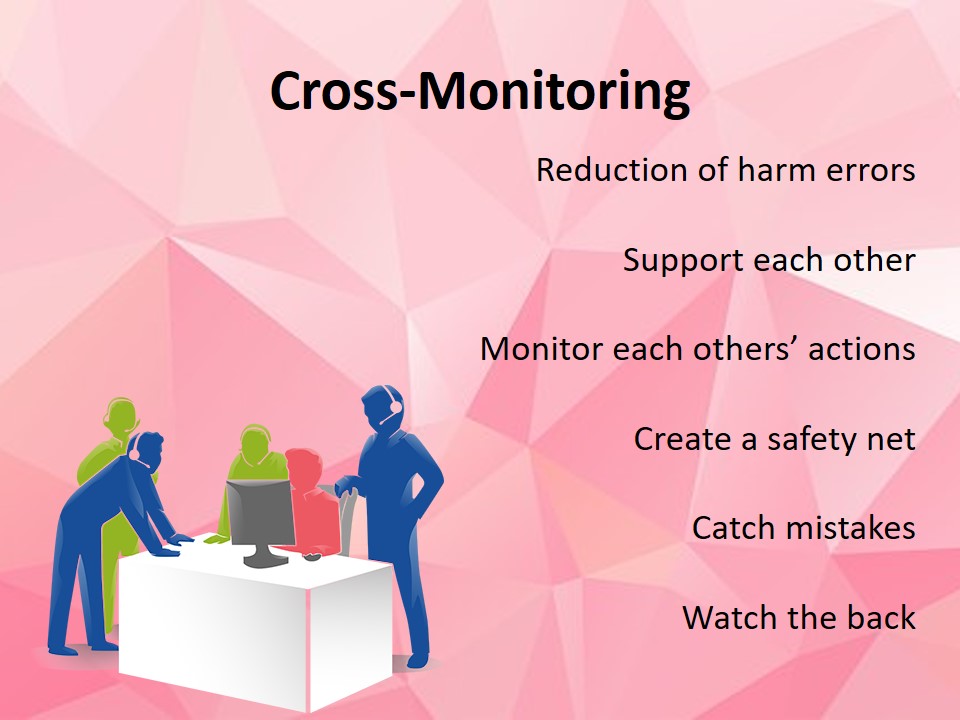
STEP
- Status of patient:
- Patient history, psychosocial issues, vital signs, medications.
- Team members:
- Fatigue, stress, workload.
- Environment:
- Faculty members, administration issues, equipment, human resources.
- Progress toward goal:
- Patient, goals, tasks, care plan.
STEP is another tool that can be used by healthcare workers to improve safe care and promote quality outcomes. It is usually applied to the process of delivery of health care and situation monitoring among employees. This strategy consists of four main components, which imply paying attention to special aspects of care (Team STEPPS, n.d.):
- Status of patient (gather patient history with his/her psychosocial issues, vital signs, medications, physical examinations, and a plan of care);
- Team members (assess if employees are exposed to such factors as fatigue, stress, or workload);
- Environment (investigate the facts about the facility, available equipment, human resources, and administration work);
- Progress toward goal (indicate a patient, set the goals of a team, clarify the tasks of a team, and check the appropriateness of a plan).
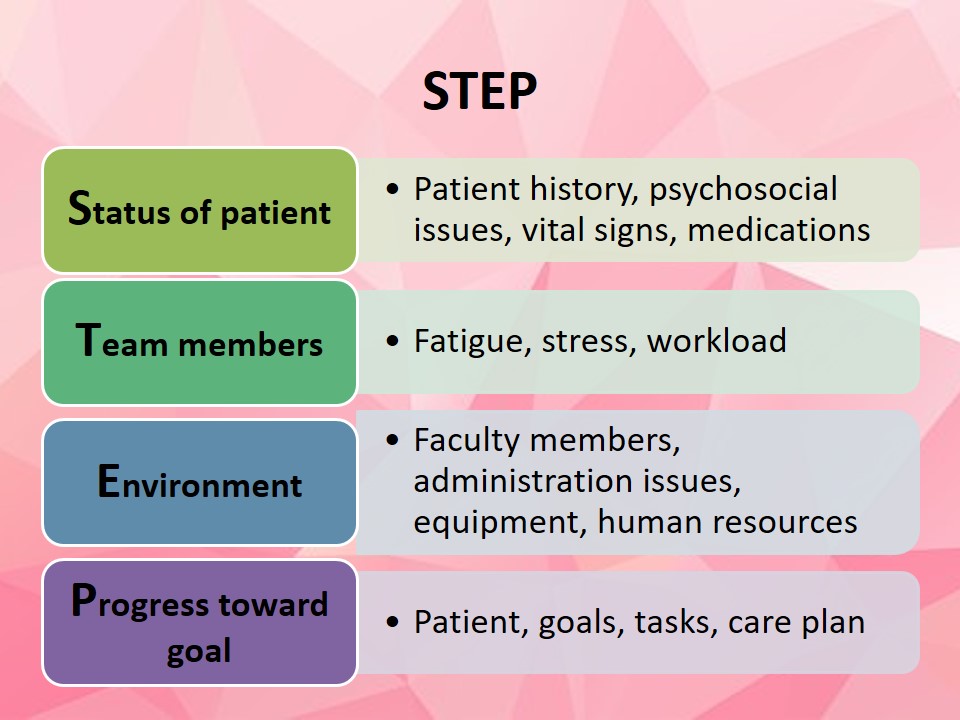
Check-Back
- The patient needs an MRA of the brain fast (initiate a message).
- An MRA of the brain fast (accept a message and give feedback).
- It is correct (double-check and give approval).
Closed-loop communication is a critical aspect of any working process. Healthcare specialists should know how to develop this type of communication to prevent medical errors and improve the working experience of each other. The developers of Team STEPPS (n.d.) recommend using the strategy known as check-back to make sure that all information is properly conveyed and understood by all the participants. There is a clear plan on how to use this communication tool in healthcare facilities:
- Initiate a message (“The patient needs an MRA of the brain fast,” a surgeon says);
- Accept a message and give feedback (“An MRA of the brain fast,” a nurse repeats);
- Double-check the received message and give approval (“It is correct,” a surgeon replies).
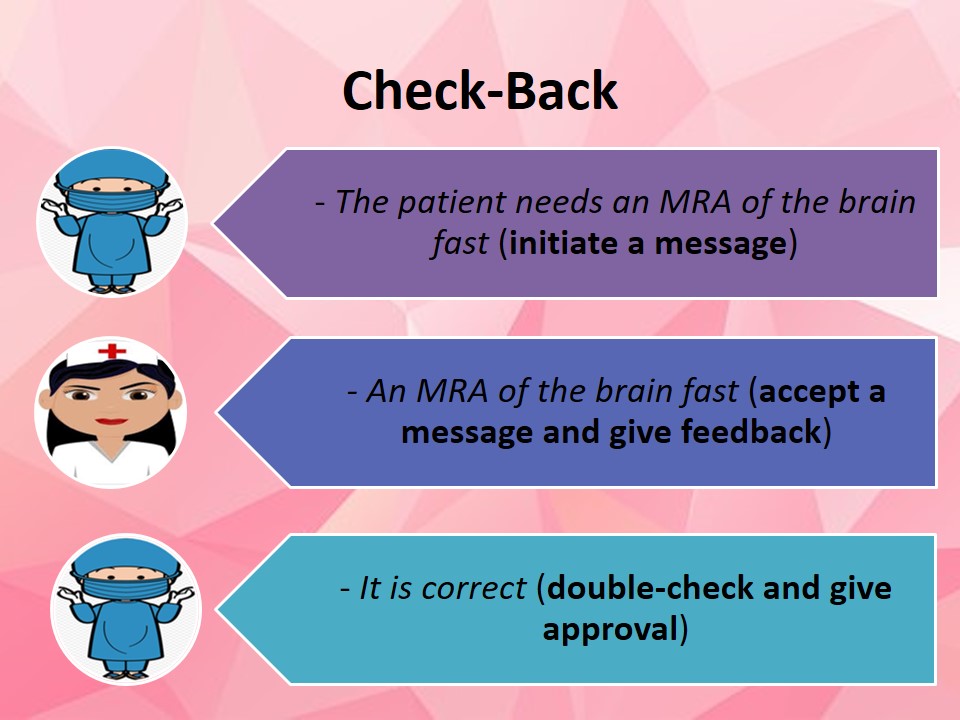
Role of Communication
- Make people aware of a situation.
- Promote emotional stability.
- Exchange of information.
- Define necessary follow-ups.
- Develop helpful lifestyle recommendations.
To improve patient satisfaction and control a care process, nurses, as well as other medical workers have to develop their communication skills. It is not enough to talk to each other but to involve patients and their families in communication. The main goal of communication is to promote awareness of a situation. When nurses or other clinicians enter a room, patients should feel support and understanding instead of fears and doubts, meaning that calm communication leads to emotional stability. When the right tone is chosen, patients are willing to share personal information that may help to develop a required care plan. Successful follow-ups and lifestyle changes can be given to patients and their families during ordinary communication with an expert.
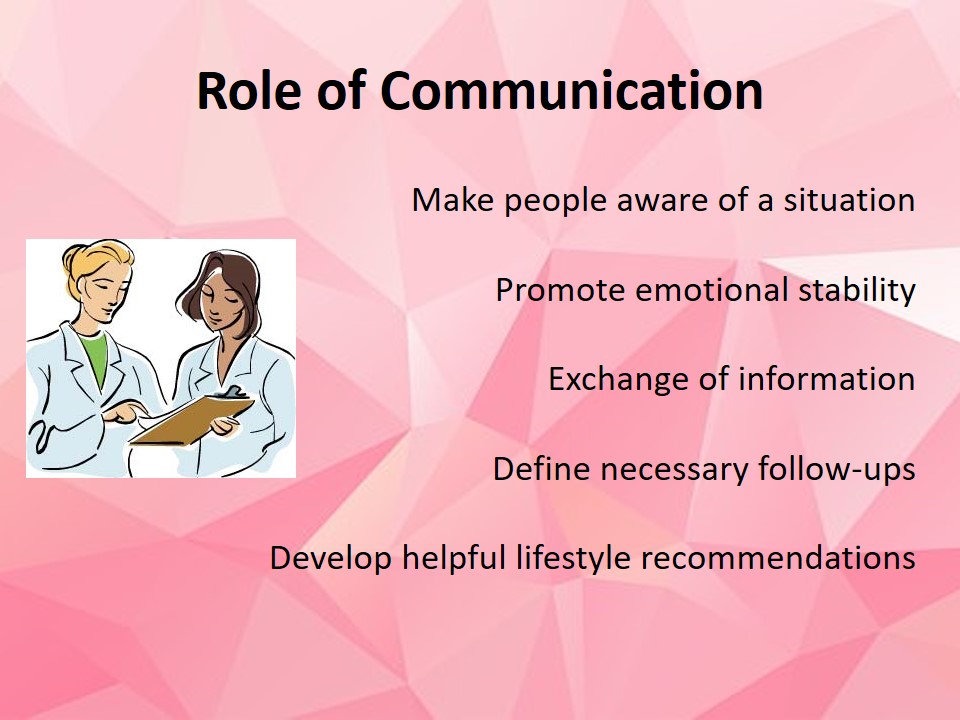
Role of Collaboration
- Gather information about patients.
- Reduce the number of medical errors.
- Increase medical staff satisfaction.
- Reduce the length of stay among patients.
- Improve patient education and engagement in self-care.
The impact of collaboration on patient safety and care quality cannot be ignored. There are many benefits that can be identified after a successful collaboration between healthcare workers, patients, and other stakeholders is promoted. From the general point of view, collaboration helps gather all necessary information about patients, their past illnesses, and current problems. Regarding the organization of work, collaboration results in the reduction of medical errors in hospitals (Morley & Cashell, 2017). Employees can use collaboration as a chance to remove workload and doubts and increase their satisfaction. Finally, patients’ benefits of collaborations include the possibility to reduce the length of stay in hospitals and receive solid education to continue treatment at home and succeed in self-care.
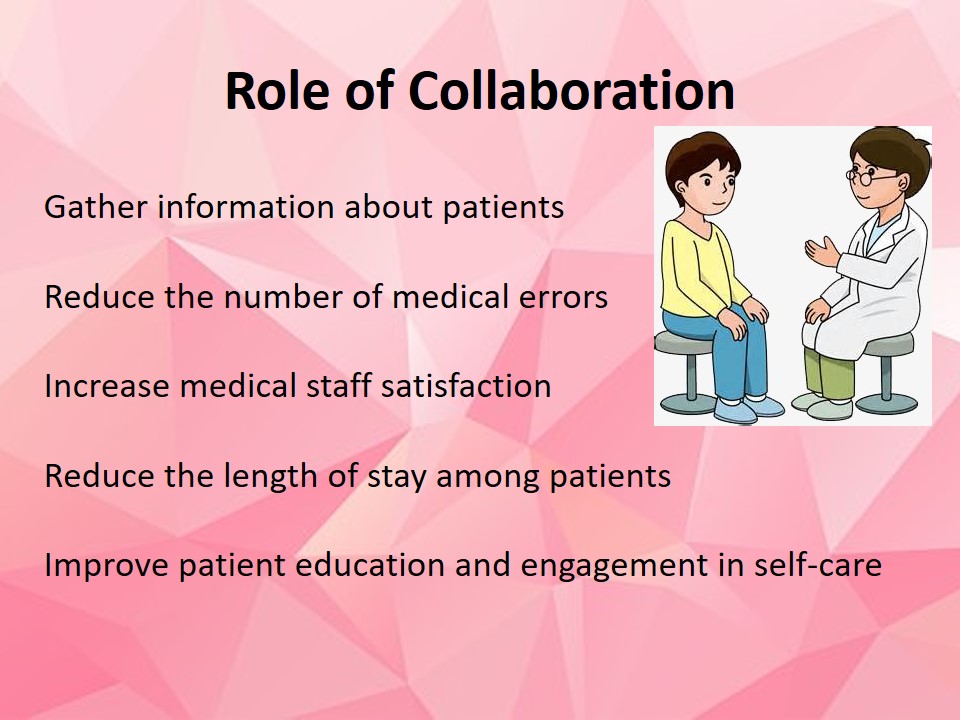
Role of Shared Decision-Making
- Patient satisfaction.
- No negative emotions.
- Low resources demand.
- Communication of health risks.
- Patient feedback.
When medical workers are able to organize shared decision-making in a proper way, they can receive a number of benefits because of the role of this factor on quality care. This process encourages people to play crucial roles in medical decisions and treatment plans. The main benefits of shared decision-making are:
- increased patient satisfaction and better health outcomes (patients know what to do and participate in discussions);
- removal of negative emotions (patients discuss their concerns directly with clinicians);
- low demand for healthcare resources (patients are involved in decision-making and can share the information personally);
- communication of health risks and benefits (patients understand what happens if they fail to follow a treatment plan) (Mohammed et al., 2014);
- true feedback to promote changes in organizations (patients share their opinions and promote changes being offered or achievements being made).
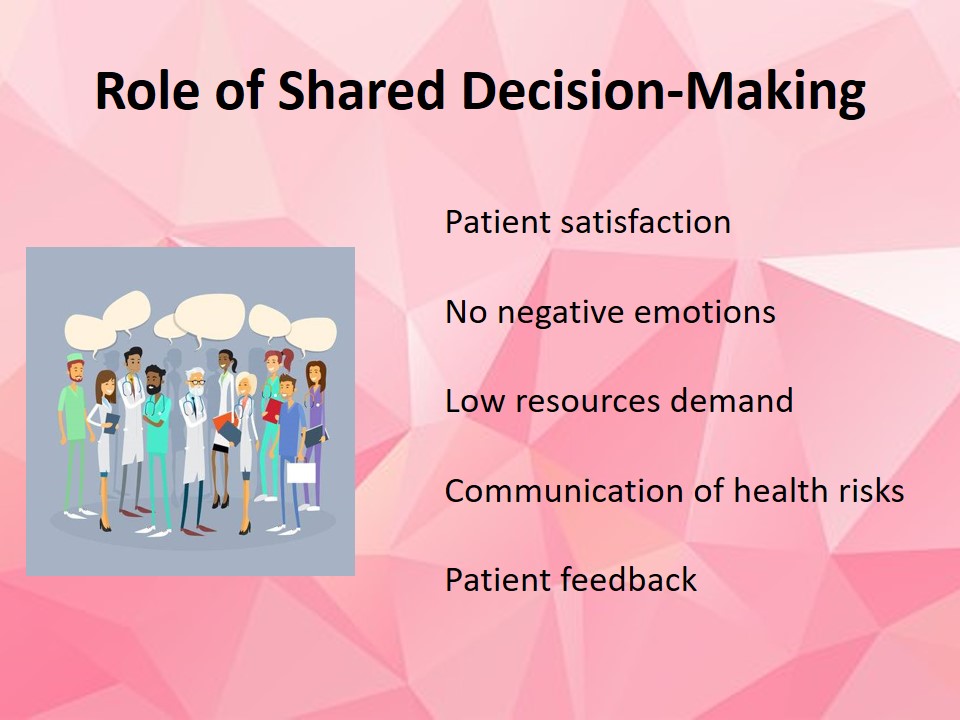
Collaboration Between Healthcare Team Members
- Assume roles and responsibilities.
- Work together and keep balance.
- Share duties and needed resources.
- Make mutual decisions.
- Formulate and carry out patient care plans.
Team collaboration is an integral factor of high-quality patient-centered care. Employees have to understand their roles and contribute to patient education and satisfaction. Team members have to be ready to work together and keep the balance of their participation through support and communication (Morley & Cashell, 2017). As soon as employees learn how to share their duties and divide tasks, they can succeed in the distribution of needed resources and save hospital costs. Finally, they have to make mutual decisions and discuss all aspects of patient care to formulate and carry out treatment plans with a possibility to make adjustments and inform each other via available technological devices.
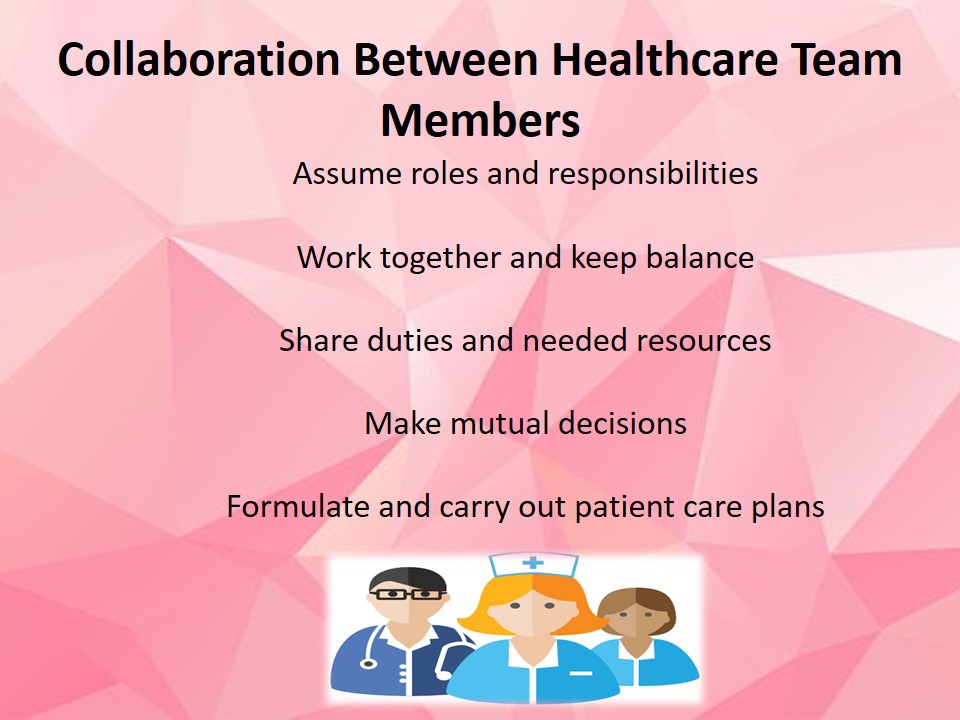
Communication Between Patients and the Staff
- Be open and honest.
- Talk about priorities and ask questions.
- Stay brief but informative.
- Rely on human rights and laws.
- Be ready to repeat answers or questions.
To be effective and successful, communication between patients and staff members have to be organized according to certain principles. Although hospitals are busy places with an impressive human turnover, communication with patients cannot be neglected by nurses and other doctors (Mohammed et al., 2014). There is a list of simple rules for both parties:
- Stay open and honest to avoid misunderstandings or mislead people around;
- Do not be afraid to talk about priorities and pose questions;
- Try to be brief but informative not to take much working time;
- Remember about human rights and laws that protect patients and the staff;
- Do not be irritated if someone asks the same questions;
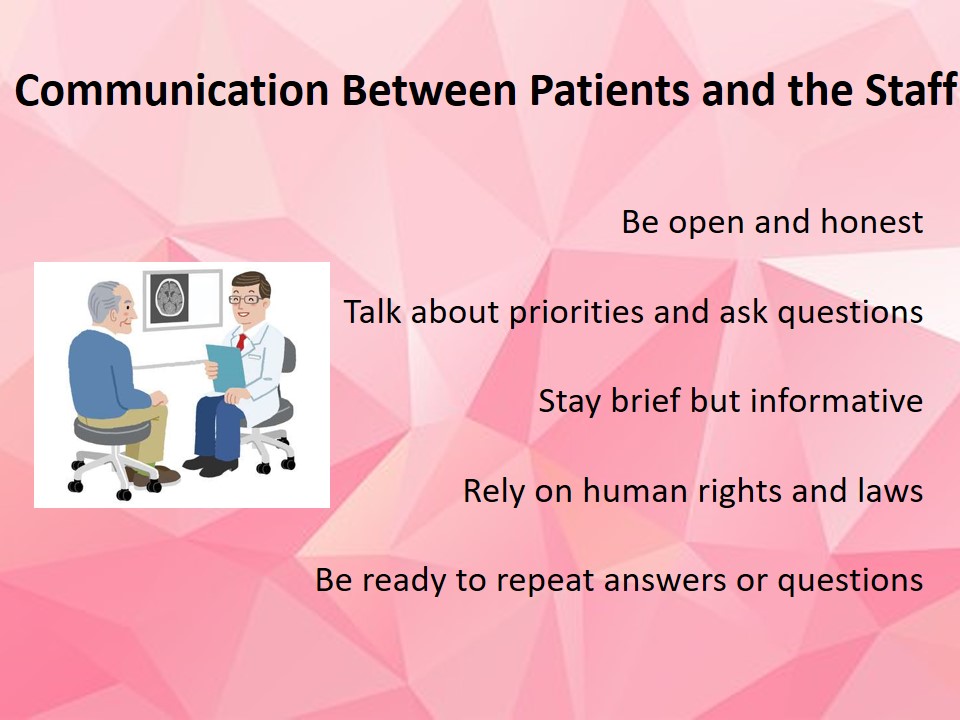
Communication with Insurance Companies
- Stay confident and get prepared for a talk.
- Deliver thoughts and questions in a clear and calm way.
- Understand benefits and know the rights.
- Document all communication.
- Never give up and be persistent.
When patients need healthcare services, they should also be ready to communicate with the representatives of insurance companies and learn their rights. Both, healthcare workers and patients, may address an insurance company to clarify some points. There are several tips to succeed in this type of communication and understand the worth of this factor in care:
- Stay confident and prepare all necessary documents, questions, and concerns;
- Share thoughts in a clear and calm way because insurance agents are not interested in your personal challenges, just the problems up to the case;
- Know benefits and rights and talk about them any time;
- Document all communication to have a solid background for future research;
- Never give up to ask for help and be persistent because it is a job of insurance companies to provide people with clear facts and options in health care.

References
Laws, regulation, and policies. (2018). Web.
Mohammed, K., Nolan, M. B., Rajjo, T., Shah, N. D., Prokop, L. J., Varkey, P., & Murad, M. H. (2014). Creating a Patient-Centered Health Care Delivery System. American Journal of Medical Quality, 31(1), 12–21. Web.
Morley, L., & Cashell, A. (2017). Collaboration in health care. Journal of Medical Imaging and Radiation Sciences, 48(2), 207-216. Web.
Team STEPPS: Team strategies & tools to enhance performance and patient safety. (n.d.). Web.